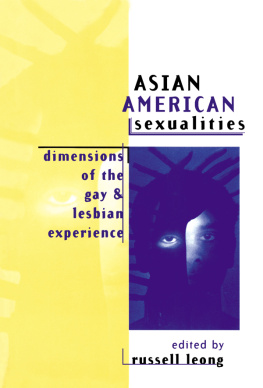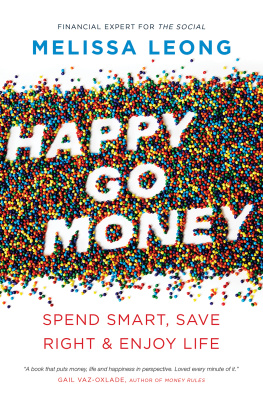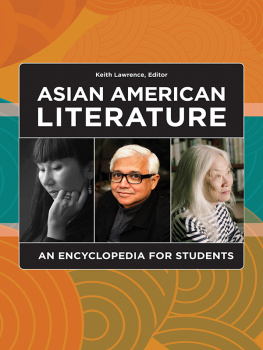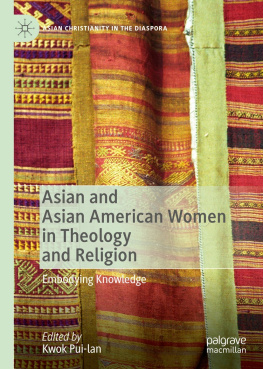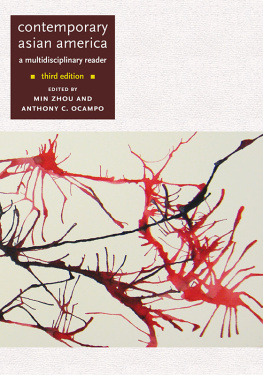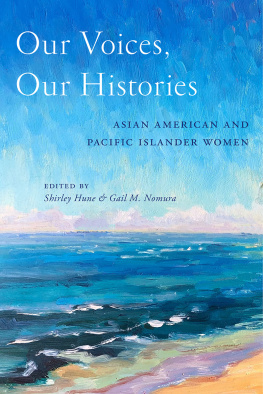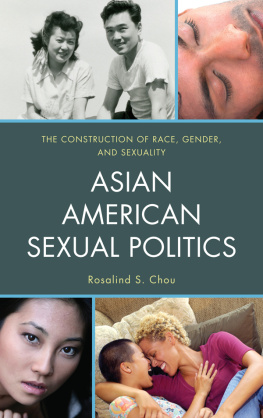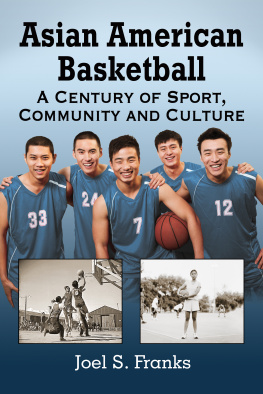Ric Parish, James Sakakura, Brian Green, Jol B. Tan, and Robert Vzquez Pacheco
Introduction Jol B. Tan
The AIDS crisis in Asian America is riddled with complexities. Because sexuality, death, substance (mis)use, and homosexuality are taboo subjects among many Asian cultures, AIDS has yet to be discussed honestly and openly among Asian Americans. An organized mobilization against AIDS has been extremely difficult for Asian Americans because Asians do not share a common culture, history, or language.
While epidemiological AIDS reports and journalistic articles have been published, there have been few accounts written by Asian and Pacific Americans themselves who live with the retrovirus, HIV, and with AIDS. Thus I offered to organize this collaborative work from the perspective of insiders living with HIV and AIDS, for selfish reasons. Perhaps having worked in the AIDS movement for the last six years, Ive saved up a lot of experiences. Having lost too many to AIDS, my heart and memories contain the spirits of friends, brothers, and sisters who are clamoring to be heard. I promised that I would never forget them. I also know many people who are living with HIV or AIDS. Sharing time and space with them to produce these essays is an effective means to tell our stories and histories, to publicly account for our losses, and to celebrate our strengths.
Three years ago, I was one of the many individuals who helped to establish the Asian Pacific AIDS Intervention Team in Los Angeles. This work gave me a clearer understanding about the challenges that face us today. Providing adequate and effective education/service to Asians and other people of color communities is difficult. On the one hand, we are dealing with a political and medical health care system that is insensitive to our particular social, cultural, and language needs. On the other hand, Asian Americans find it difficult to discuss issues of sexuality, illness, death, drug (mis)use, and other subjects that are linked with AIDS. But as a result of doing AIDS work, I have also met dedicated and brave activists/artists who continually challenge the system as well as their home communities.
The topic of AIDS in any community of color involves a thorough discourse on AIDSphobia, racism, homophobia, sex(uality), sexism, classism, and other social diseases that compose the total realities of the pandemic. Given the restrictions of limited space and resources, the authors of this communion were only able to touch upon a few of these issues.
We authors are not all of Asian descent. The Asian experience in the United States cannot be discussed without an exploration of our shared histories with other communities of color. You will hear from Ric Parish, activist, artist of Pilipino and African American descent living with HIV. His essay entitled, Round Midnight discusses the social and political complexities of AIDS in Asian America. You will hear from James Sakakura, a Japanese American (Yonsei, fourth generation) activist and artist living with AIDS. His essay entitled til death do us part uncovers the raw, emotional and erotic truth about his life with his partner, Brian Green. You will also hear Brians truth in his essay Vigil. Green is an African American artist living with HIV. Ive contributed a slice of life in my essay entitled, Faith that intertwines my reality as a Pilipino HIV-negative activist/artist with confessions of love to my lover, Robert Vzquez Pacheco. Robert is a long-time Puerto Rican AIDS activist and artist living with AIDS. His essay La Fe que Consuela (Faith that Consoles) testifies to his personal history and experience with AIDS and the joys and complexities of our relationship. In a way, these essays are like family letters, corresponding one to the next, bridging our perspectives and constructing our collective truths.
These men are my family. Traditionally, families are defined as persons who are bound by blood and a common history. My family of gay men of color and other queer families is also bound by blood and history. AIDS has brought us together and kept us together. Mortality is our worse enemy and our greatest gift. Our losses and our fears have motivated us to live and love fiercely. We have founded, continued to work for, and sustain efforts movements and institutions to battle this pandemic. Our courage, strength, and genuine affection for each other keeps us joyful and hopeful in our darkest times. Yup, you could say we had to learn how to make slammin lemonade.
Sex is, and must be, discussed explicitly in this essay. Lovemaking, fucking, and sucking are juxtaposed against our romances, unions, fears, and hopes. We simply cannot discuss AIDS without discussing sex. We cannot discuss sex without describing our bodies, motions, and emotions. Sexually speaking, this essay takes risks because 1) it talks about sex explicitly, 2) boldly declares that HIV positive men continue to be sexual despite AIDSphobia, and 3) speaks about unions among gay men of color.
Sex with/among HIV positive men is still a subject that has not been fully explored (if at all), and especially in Asian (American) literature. These essays are perhaps the first to approach the issue of sexuality among men who are both infected and affected. Yes, HIV positive men are still having sex, great sex, not so good sex, romantic sex, sex with HIV-negative men, sex with each other. HIV infection is a constant in the lives of gay men of color. Statistics tell us that the face of AIDS is changing. Gay men of color are among those who are highest at risk for HIV infection and transmission. We are being systematically destroyed. If racism, classism, or homophobia cant kill us, AIDS sure will.
Finally, we thought it was important to assemble gay men of color from different races and ethnicities. In popular culture, interracial relationships are usually discussed as white and the other. This has become an important element in our definition of interracial. Whiteness is the constant whenever interracial relations is discussed. Why is that? Well, the truth is, gay people are not automatically immune from internalizing white racism or other forms of oppressive, self-destructive attitudes and behavior. The cycle of hate is that deep and powerful. The reality is that the gay community and the gay movement are white-led and white-run (therefore all forms of cultural production reflect this obsession with whiteness). This is evident in the images that are produced in gay media. The blond, the buffed, and the blue-eyed remain the crowning rulers in the sexual hierarchy, while the other exotics wade below waiting to be defined and recognized as somebody. Well, yes girl, I am somebody, and I dont need a white supremist gay community to tell me who I am.
Gay Afrocentric culture has brought the beauty of black on black love to fruition. Similarly, gay Latino and Asian and Pacific Islander cultures are also mirroring the practice of loving ones own (unfortunately, I know very little about Native American culture to comment). This is an important step in the empowerment of gay men of color.
Loving thyself is beautiful, but I dont think we should stop there. People of color have shared histories in the United States, and we are not taught to recognize our shared oppression or victories. Similarly, gay men of color in cosmopolitan settings also drink from common philosophical waters. This collaborative work is one of the first to discuss gay male relationships from a color on color perspective, Color on Color love is vital in interracial discourse. I believe that celebrating the unions among gay men of color is a revolutionary step in challenging and affecting multitudinous levels of the hegemony. People of color loving one another is a political act.
Communion is a public yet personal statement. AIDS is a personal issue as well as a political one. We wanted to introduce you to the role that HIV/AIDS has played through our lives and the lives of those who are infected and affected by this disease. We invite you to read these narratives with an open heart and an open mind.

